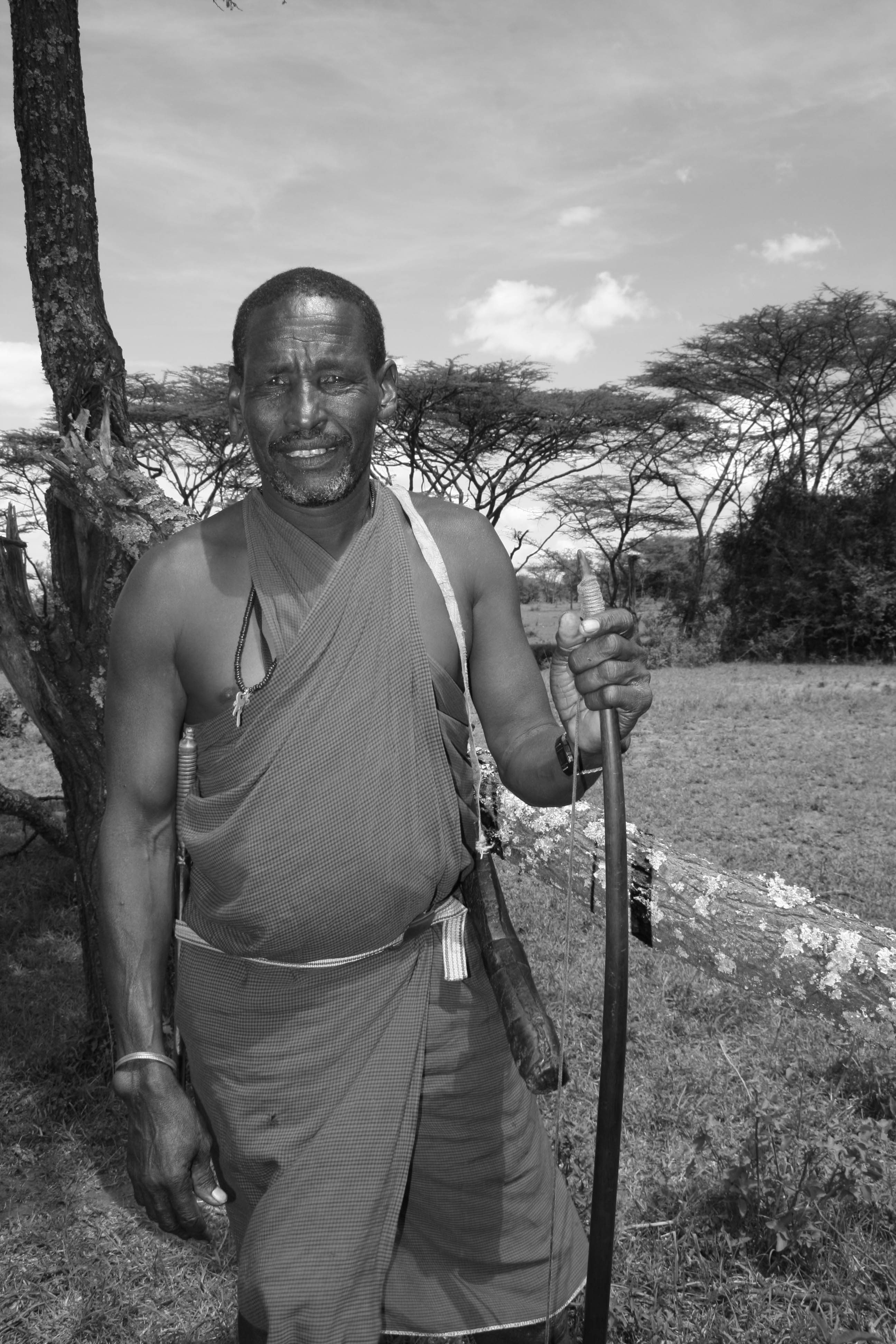Living with Lions
by Jane Atkins, Human Planet Researcher
‘You see, Lions and the Dorobo, we feed each other.’
‘If we hunt a large animal, we take away as much as we can, but leave the rest for the lions to feed on. And sometimes the lions kill a really fat animal and we say, lets take this one. It is not simple, you have to track carefully and quietly. You are scared.. thinking - will I be mauled?’
‘But when you are hungry and know lions have killed first - you take your chance. There are days when we eat only what the lion has killed. We live on those lion kills until we finally make our own kills.
When we filmed 3 Dorobo hunters stride up to 15 lions to steal from their fresh kill our hearts were in our mouths. Courageous? Ingenious? Suicidal? All of these perhaps, but this one act is undeniably impressive. The Dorobo say they are hunters just like lions. They watch lions, and how they hunt. Just as lions do, the Dorobo watch every animal on the great plains - and study each individual. Like lions they observe which ones are wounded, slower, easier to pick off. They wait and wait until the time is right to hunt. And if the lion gets there first, well the Dorobo turn that into another opportunity.

There are three lion prides living in the same area as the Dorobo. This 22 strong pride are just a few hundred metres from the Dorobo's regular camp.
But these opportunities are fading, and fast. These hunting and scavenging practices may be age old, but in 21st Century Kenya, they are banned under the country’s blanket law that no hunting is allowed in Kenya. Although the law was made primarily for big game hunters, it has been enforced at the local level, with traditional tribes, to avoid any ‘grey’ areas.
And so these Dorobo men are living a daily struggle of holding onto a lifestyle passed down through the generations; being free to walk through the great plains, hunt game to feed themselves and their family and sleep under the stars in caves and hidden valleys. Now, they all accept that although they were brought up to be hunters, they will not be bringing up their children to be hunters, to know the wildlife as intimately as they do.
Olkinyei is one of the last pockets in Kenya where the Dorobo still live, but in the last year, the area has been identified as a new conservancy, which means a step up in wildlife conservation in the area. This will ultimately push out of the Dorobo hunters.
And so in our lifetime, we will see an end to this ancient lifestyle of hunting, gathering and scavenging. An accumulative knowledge that has been passed down over 1000s of years.
In a time when stories about endangered wildlife regularly hit the headlines, few people seem to notice that incredible human cultures are being lost; ‘like swatting a mosquito - no-one seems to notice’. The irony here is that wildlife conservation has played a strong part in the Dorobo’s fate.
Whether you think this is right or wrong, it seems the fate for the Dorobo is inevitable. However, it may still be possible to keep their extraordinary tracking skills alive.
Today Jackson Looseyia, who runs a safari lodge in the Masaai Mara, has started employing Dorobo men to be spotters and trackers for his tourists. Jackson says, ‘If the Dorobo way of life disappears, so too does their knowledge. The Dorobo can spot and name any distant bird or animal, identify any nearby track or noise, and tell the story of hunt through reading the tracks in the sand.’
So perhaps this is one way for Rakita and his friends to keep their knowledge alive, even if their traditions die. It may not be as heart racing as hunting a buffalo, listening to the sounds of the night, or stealing food from a lion, but perhaps it’s enough? Rakita told me as we left ‘Of course I am sad to say goodbye to the life of my father, my grandfather… but what can I do? I cannot continue this life much more… I have already been in prison before now! And to bring up my son as a hunter here would be irresponsible. I don’t want him to go to prison. It is a shame, but what can I do?’.
If Human Planet achieves anything, a respectful salute to some of the people we filmed with would be a great thing. For the team back in the UK, finding some of these unique stories was hard, and filming them was challenging. But in a few years to come, these stories may turn out to be the last record of not just the Dorobo but many of the other people and cultures we were so privileged to film.
Watch the Dorobo steal from the lions here: http://www.youtube.com/watch?v=pNeNTMmltyc
15 Minutes of Fame Across the World
by Karina Moreton, Mongolian Fixer, Human Planet
The Human Planet series is made up of over 70 individal stories, each several minutes in length. As many of you will have gathered from the “Behind the Lens” snippets at the end of each episode, filming these sequences is never easy. Not only were there the challenges of the film crew – such as how to deal with ice melting; cliff edges and tides turning, there are the stories of the people portrayed. For some of them, the whirlwind of a film crew living with them was years ago now and they have gone about their daily lives since. Now that the series is out, will anything change for them?
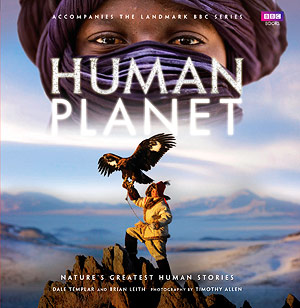
Berik from Human Planet's Mountains programme features on the book's cover
Berik from the Mountains programme is 16 years old. This is him and his eagle on the front of the book that accompanies the series. The book and programmes will be distributed worldwide and it’s hoped they will reach a huge audience. This is more than 15 minutes of fame! Around the world there is a culture of stardom – what would the teenagers from ‘Fame Academy’ and other talent shows give for this exposure? Some could worry that it might go to his head.
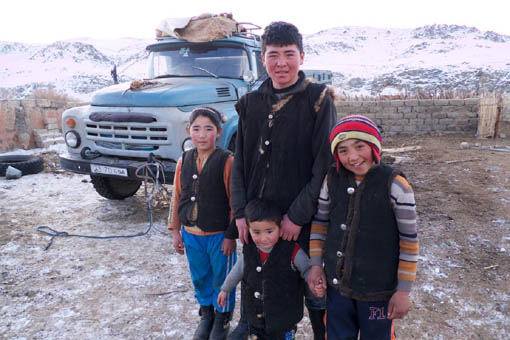
Berik with his cousins at his family home in Altansogts (image copyright Dina Mufti)
I’d like to show a photo or a clip of Berik looking at the book or DVD and giving his reactions. This however isn’t possible. Although copies of the book are on the way to Berik, they will take another 40 days to reach him. ’Outer’ Mongolia is considered to be the back of beyond, and Berik lives in one of the most remote parts of the country. I don’t anticipate that Berik will be exposed to his ‘fame’ until the next Eagle Festival.
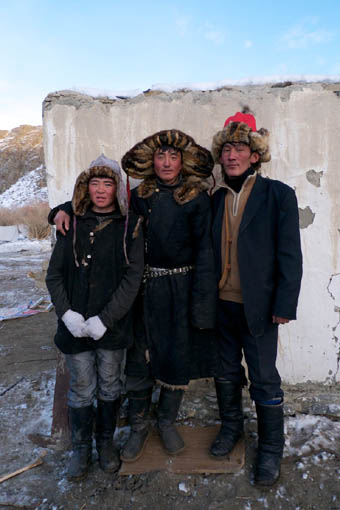
Berik with his older eagle hunting friends … before his first big hunt. (Image copyright Dina Mufti)
I think initially it will be the pages they feature in that will be the most thumbed through, though, with time, the other pages will be the ones that hold their attention. Over the last ten years of travelling through Mongolia, I have shown the reindeer herders of the north photographs of the camel herders in the south and I have shown young children photos of wolves and argali, animals that they have only dreamt of. Suddenly through this book, the Kazakh Eagle hunters of Mongolia are connected with not only the horse and camel breeders of central and southern Mongolia, but now they have shared an experience with the narwhal hunters of Greenland, mussel hunters of Canada and the honey gatherers of Nepal.
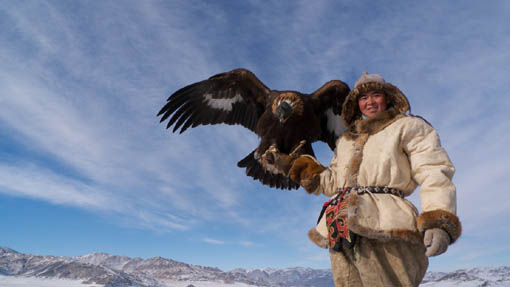
Berik, shortly after he catches his first fox …now officially a 'Kazakh man' (Image copyright Dina Mufti)
Mongolia is a landlocked country, so the images of the sea gypsies in the Pacific will no doubt enthral them. The bird of paradise hunter with his colourful headdress and nose piercing will amuse them. The naked Suri fighters will bemuse them. It is however I believe the story of the falconer in Dubai that will fascinate them. So much in common – for he also trains birds of prey to hunt, and yet they are in such a totally different world. Coming from a country with a rural population density of 0.9 people per square kilometre, it is almost inconceivable for a Mongolian to comprehend what it would be like to live in Dubai where there are 408 people per square kilometre.
Rural urban migration is a problem in Mongolia. Teenagers are attracted to the bright lights of the city. Berik might still be pulled away from his traditional way of life, but I think that perhaps the series will have changed the prospects for him and other young eagle hunters. By hosting occasional visitors who want to experience their culture first hand, this and other communities like them, have a renewed pride in what they do and a much-needed supplementary source of income.
After the characters in the Human Planet series have had their 15 minutes of fame, the book and the DVD will live on and spread their stories around the world. Many of the traditions and practises shown in the series may not survive until eternity.
Perhaps though, unknowingly, by exposing some of the characters to ‘others’ they may have slowed down the demise of man’s diversity?



